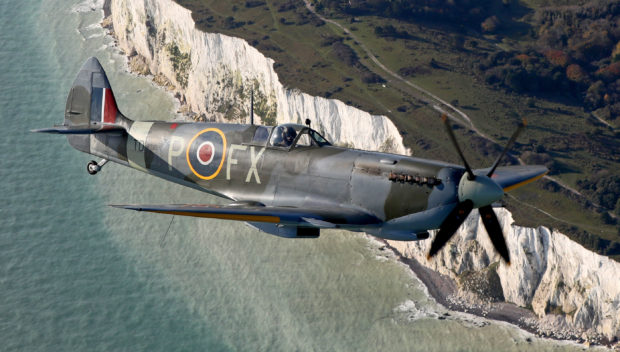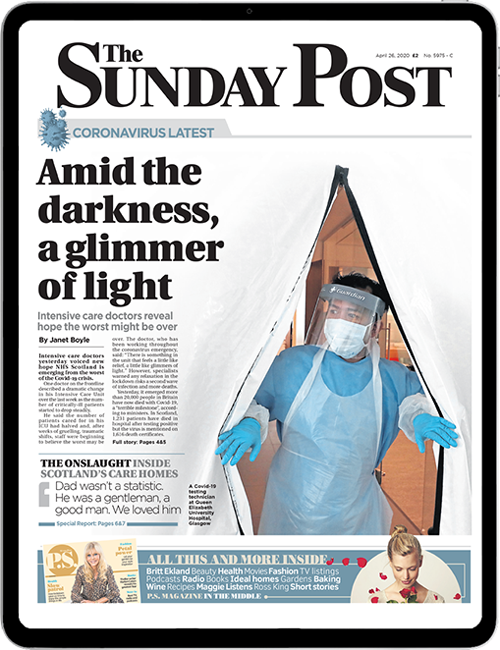
Ahead of the 80th anniversary of the Battle of Britain, author Graham Hoyland tells Laura Smith the Honest Truth about the trusty Rolls-Royce Merlin engine that was produced in a Glasgow factory and powered the Second World War’s most iconic aircraft.
What’s the significance of the Rolls-Royce Merlin engine?
The Rolls-Royce Merlin probably won us the Battle of Britain, which took place between July and October 1940. The Hawker Hurricanes and Supermarine Spitfires powered by the engine managed to repel the German bombers trying to destroy RAF air bases. But it nearly didn’t happen. At the last minute, a wealthy benefactress, Lady Lucy Houston had to provide the funds for the Rolls-Royce “R” racing engine that sired the Merlin. Her money helped to nurture the new power unit.
What made it superior to other engines?
The Rolls-Royce Merlin was simply an astonishing engine. During the Second World War, Rolls-Royce managed to increase the engine from 1,000 horsepower to 2,000 horsepower. And it was reliable. Pilots trusted the Merlin.
There was vicious competition between the German and British fighters. It was a question of who had the most manoeuvrable fighters and who had the most powerful engines. It was the Rolls-Royce expertise with their supercharger (like a modern turbo) that made all the difference, as it made the Merlin engine slightly more powerful than the German Jumo engines.
How was it used by the RAF?
The Merlin engine was first used by the RAF in 1936 in the Hawker Hurricane. It was also the aero engine that powered the Supermarine Spitfire, the de Havilland Mosquito and the Avro Lancaster bomber, the aircraft which together turned the tide of the Second World War.
The RAF switched to jet engines after 1950. Merlins were briefly used in civil airliners but then disappeared when the jet engine proved superior.
When did production begin?
The Merlin was first made at the Rolls-Royce factory at Derby, in 1936. A shadow factory was built at Crewe, in case the Derby factory was destroyed by the Germans. The second shadow factory was at Hillington in Glasgow.
At its height the factory employed 25,000 workers. Built in 1939, it began engine production in 1940. By 1943, output reached 400 engines each week. Production peaked at 1,650 a month. Hillington manufactured 23,647 engines during the war, 14% of the total Merlin production worldwide. Record production is reported to have been 100 engines in one day. The factory made Rolls-Royce jet engines for many years, and closed in 2005.
How vital was Glasgow?
Glasgow was crucial to Rolls-Royce because the workers were highly skilled. Glasgow built the best ships in the world (and most of them).
What role did women play?
Women were a vital part of production in Glasgow because there simply weren’t enough skilled men left, so specially trained women operated mechanised pattern equipment. Films of women working on assembling the Merlin at Hillington show them wearing the Victory Roll hairstyle which featured large curls of hair framing the face. The name was a reference to the fighter plane manoeuvre. Women were allowed to leave their shift three minutes early in order to get home and prepare food for the men.
What was the most interesting thing you discovered during your research?
How Margaret Horton turned the Spitfire fighter into a two-seater. She was a WAAF (Fitter Mechanic Airframes) at an RAF airfield on February 9, 1945. Margaret was instructed to help stop a Spitfire swaying by sitting on the tail while the plane taxied to the take-off position.
At the end of the runway the pilot, Neil Cox, forgetting Margaret was still on the tail, took to the air. He did a whole circuit of the airfield safely with Margaret still clinging to the tailplane.
Merlin: The Power Behind The Spitfire, Mosquito And Lancaster by Graham Hoyland is published by HarperCollins on Thursday.

Enjoy the convenience of having The Sunday Post delivered as a digital ePaper straight to your smartphone, tablet or computer.
Subscribe for only £5.49 a month and enjoy all the benefits of the printed paper as a digital replica.
Subscribe